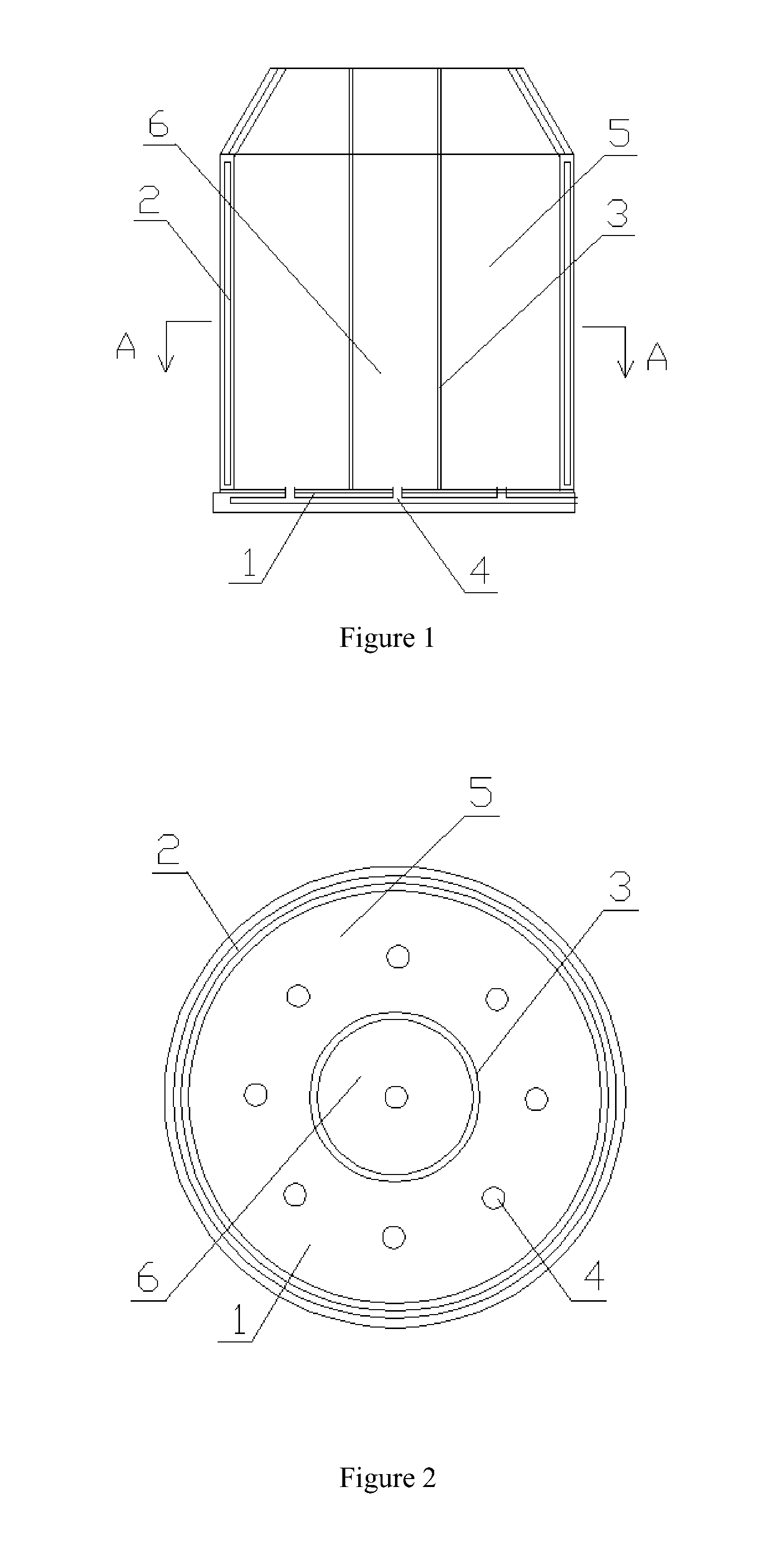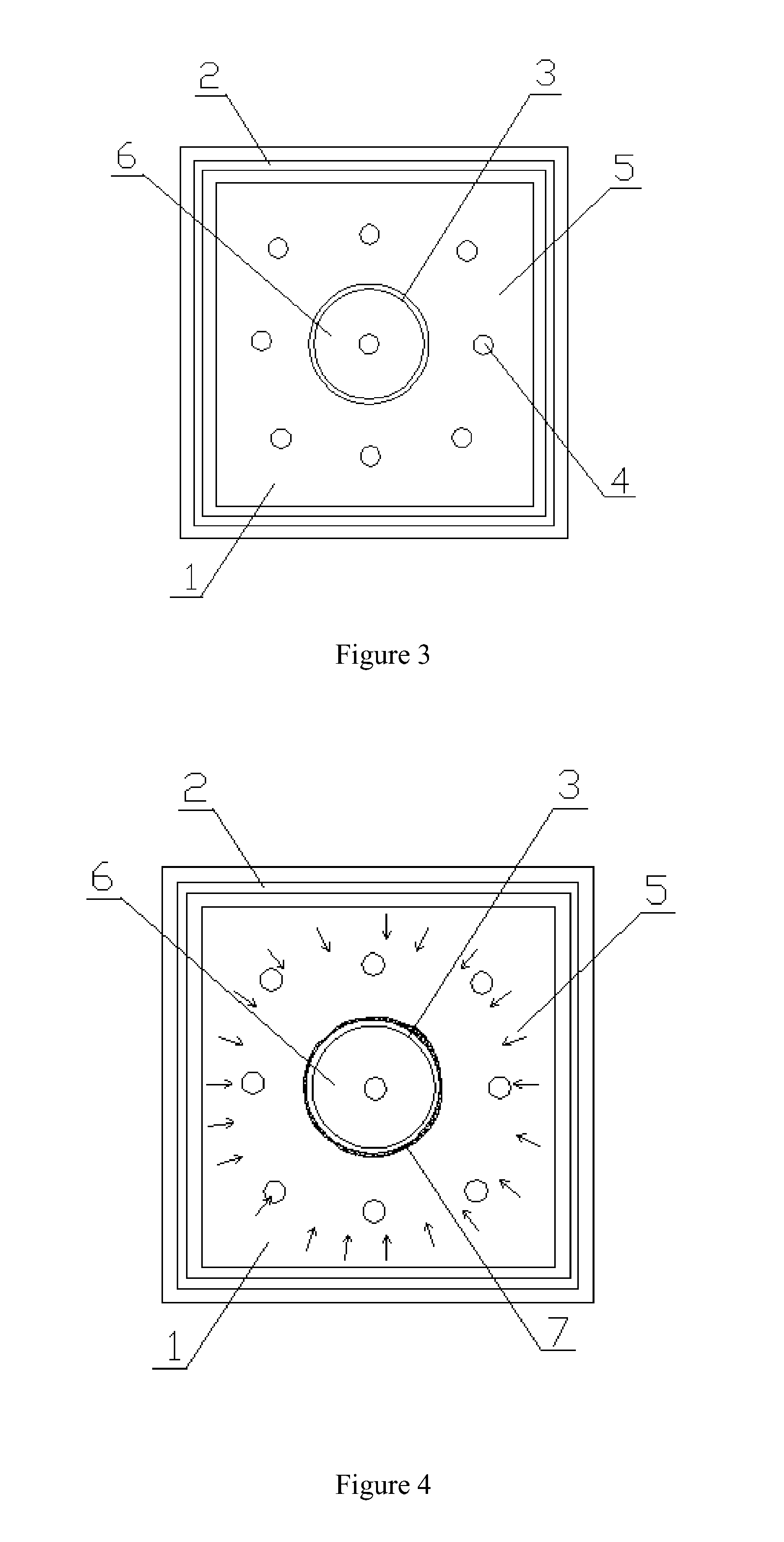Annular clean metal casting mold
a metal casting mold and clean technology, applied in the direction of manufacturing tools, foundry patterns, foundry moulding apparatus, etc., can solve the problems of metal not being able to be obtained with a high quality, the two possibilities are not what they are, and the segregation and inclusions in this area are difficult to be removed
- Summary
- Abstract
- Description
- Claims
- Application Information
AI Technical Summary
Benefits of technology
Problems solved by technology
Method used
Image
Examples
embodiment 1
[0022
[0023]As shown in FIGS. 1 and 2, the annular clean metal casting mold includes a casting mold body with an ingate 4 and a heat preservation dead head arranged on the ingot mold body. The mold body have a cylindrical shape.
[0024]The casting mold body includes a cold bottom mold plate 1 and the peripheral cold mold plate 2 in connection with the cold bottom mold plate 1. An annular hot preservation layer 3 is disposed inside the peripheral cold mold plate 2. A cyclic clean crystalline region 5 is formed between the peripheral cold mold plate 2 and the annular hot preservation layer 3. The sacrificial crystalline region 6 is formed inside the cyclic hot preservation layer 3.
[0025]The cold bottom mold plate 1 is a water-cooled mold plate.
[0026]The peripheral cold mold plate 2 is a water-cooled mold plate.
[0027]The annular hot preservation layer 3 includes the skeleton and the heat preservation material outside the skeleton,
embodiment 2
[0028
[0029]As shown in FIG. 3, the annular clean metal casting mold includes a casting mold body with an ingate 4 and a heat preservation dead head arranged on the ingot mold body.
[0030]The mold body has a cubic shape. The casting mold body includes the cold bottom mold plate 1 and the peripheral cold mold plate 2 in connection with the cold bottom mold plate 1. An annular hot preservation layer 3 is disposed inside the peripheral cold mold plate 2. A cyclic clean crystalline region 5 is formed between the peripheral cold mold plate 2 and the annular hot preservation layer 3. The sacrificial crystalline region 6 is formed inside the cyclic hot preservation layer 3.
[0031]The cold bottom mold plate 1 is a water-cooled mold plate.
[0032]The peripheral cold mold plate 2 is a water-cooled mold plate.
[0033]The annular hot preservation layer 3 includes the skeleton and the heat preservation material outside the skeleton.
[0034]As shown in FIG. 4, an annular hot preservation layer 3 is dispos...
PUM
| Property | Measurement | Unit |
|---|---|---|
| pressure | aaaaa | aaaaa |
| shape | aaaaa | aaaaa |
| energy | aaaaa | aaaaa |
Abstract
Description
Claims
Application Information
 Login to View More
Login to View More - R&D
- Intellectual Property
- Life Sciences
- Materials
- Tech Scout
- Unparalleled Data Quality
- Higher Quality Content
- 60% Fewer Hallucinations
Browse by: Latest US Patents, China's latest patents, Technical Efficacy Thesaurus, Application Domain, Technology Topic, Popular Technical Reports.
© 2025 PatSnap. All rights reserved.Legal|Privacy policy|Modern Slavery Act Transparency Statement|Sitemap|About US| Contact US: help@patsnap.com



